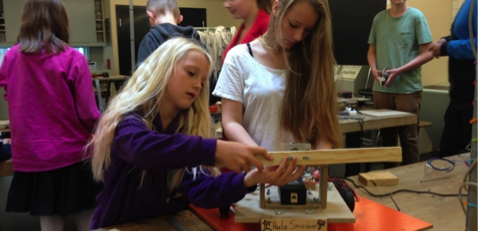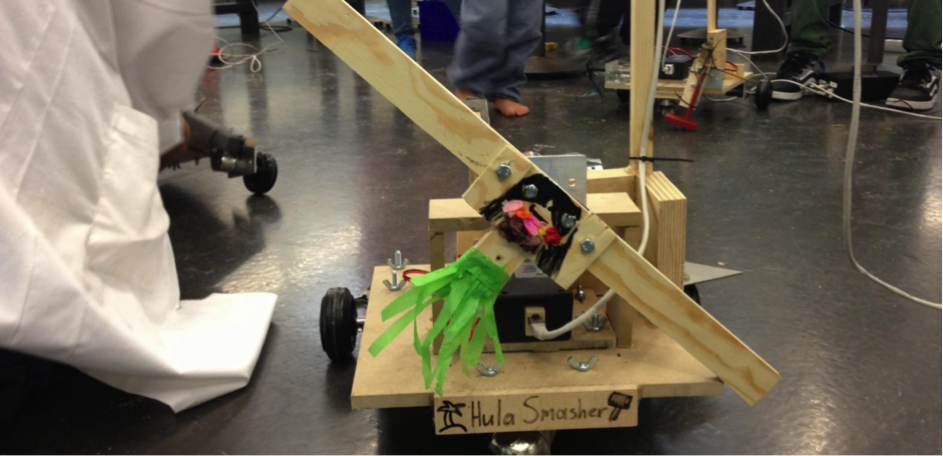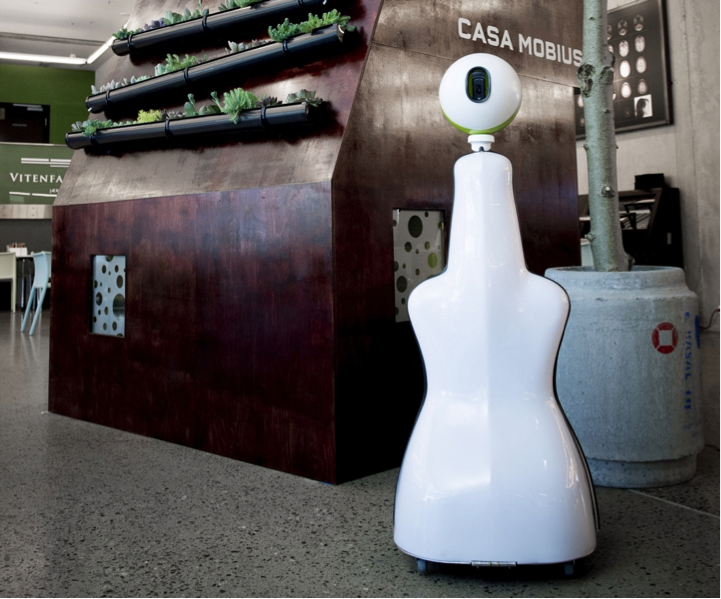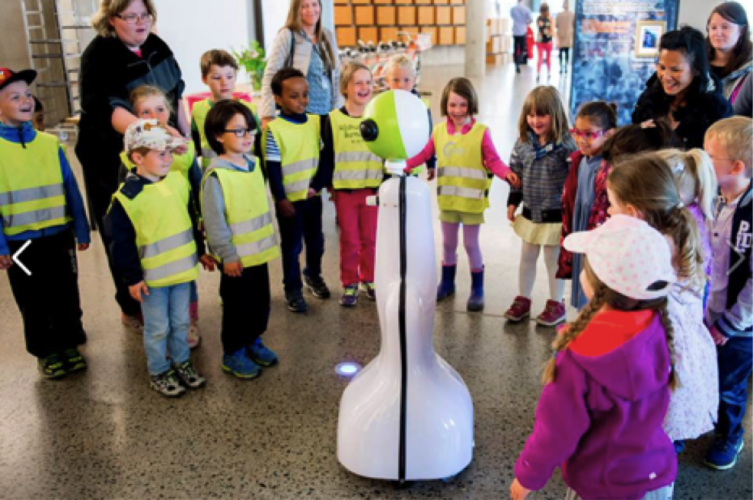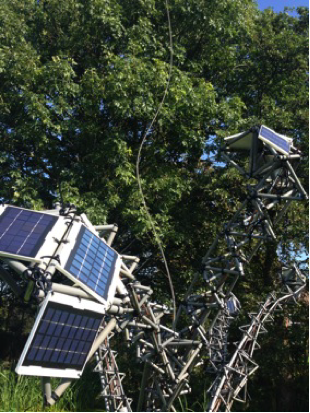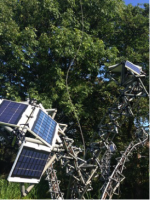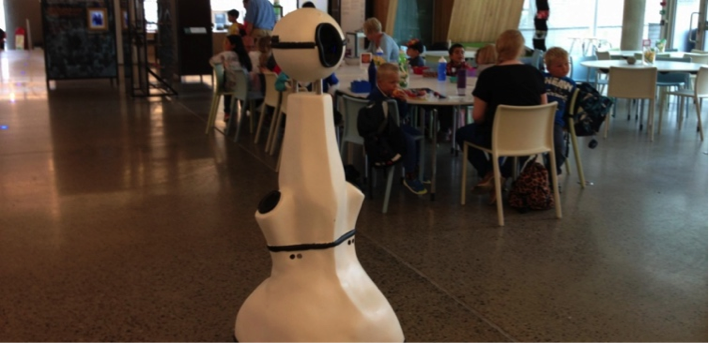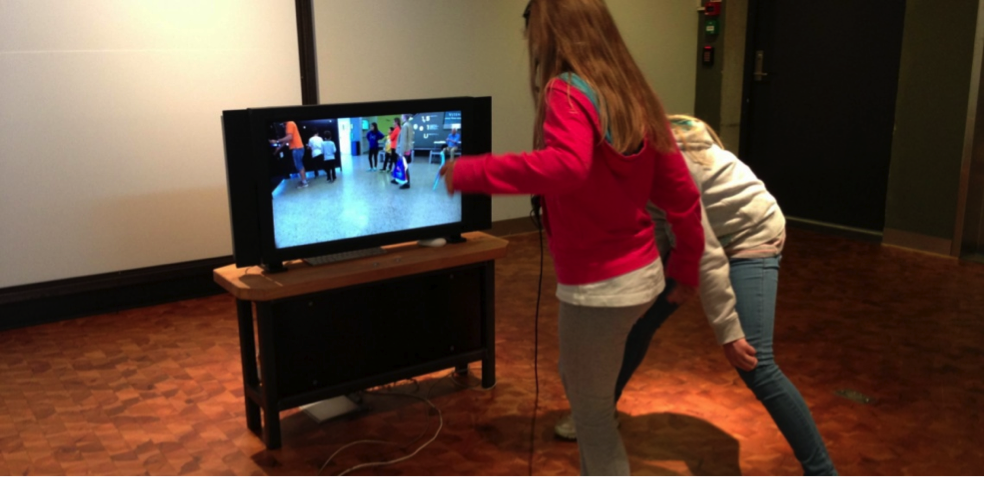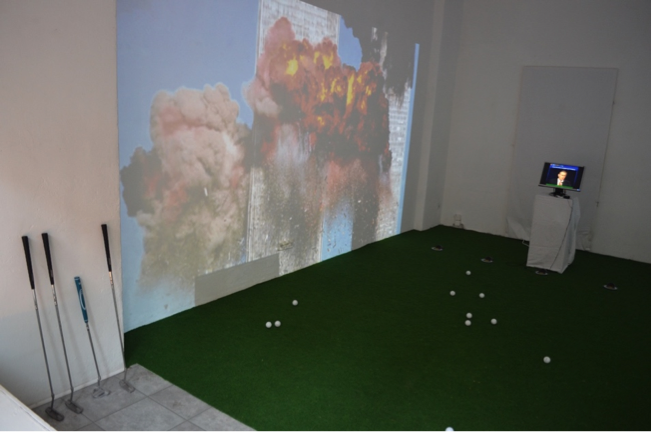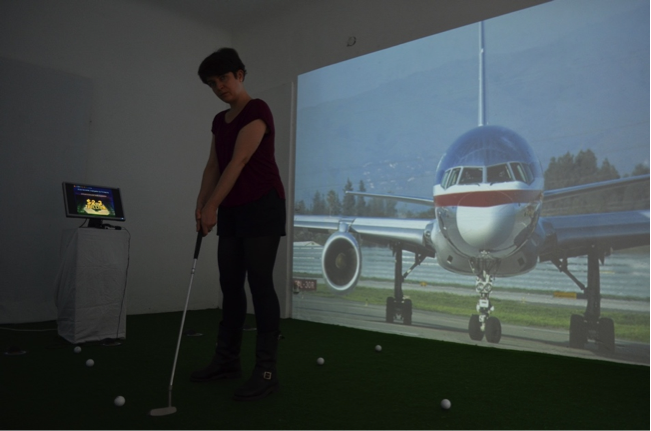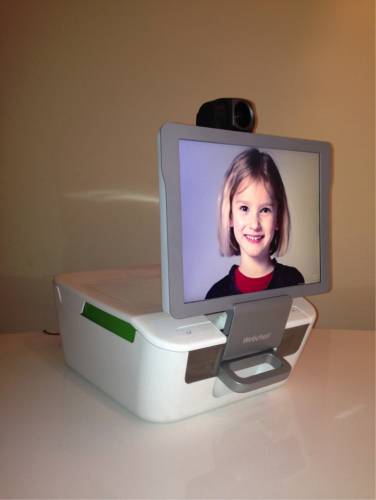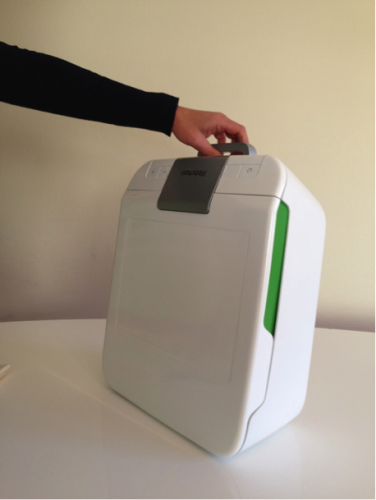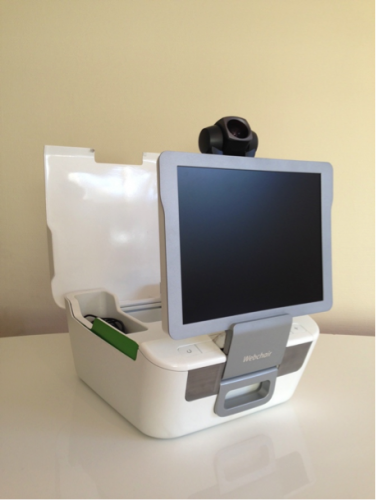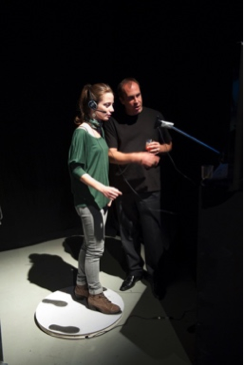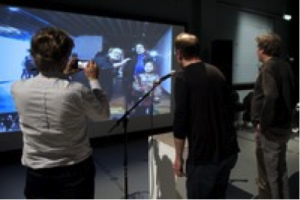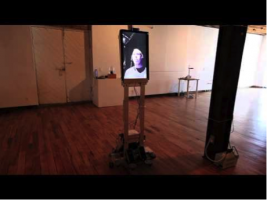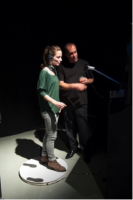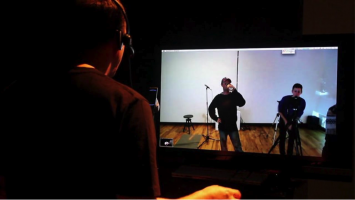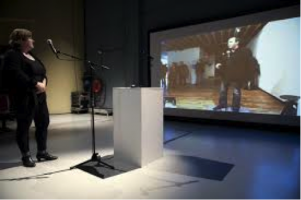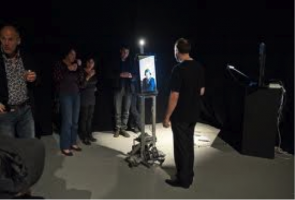DATE – 2011
DISCIPLINE – Science
Webchair Autism Transition Technology (WATT) … a bridge to communication, education, transformation, and personal freedom.
A. Harris Stone, Ed.D. Andrew D. Summa, Ph.D., Ed.S., Ed.D.
Chancellor, The Graduate Institute Executive Director,
National Center for Electronically Mediated Learning
The increased prevalence of Autism Spectrum Disorders (ASD) in children aged 3-12 (i.e., one (1) out of ninety-one (91) children is diagnosed with ASD, Centers for Disease Control Statistics issued in 2010) has led to a clarion call for educational interventions that mitigate the current constraints in educating children who are afflicted by one or more of the Autism Spectrum Disorders (i.e., Autism, Pervasive Developmental Disorder – Not Otherwise Specified [PDD-NOS] and Asperger Disorder).¹
For the purpose of establishing a working definition of ASD for this article, the term Autism Spectrum Disorders (ASDs) are defined as a group of disabilities characterized by atypical development in three behavioral domains: 1) social interaction; 2) language, communication and imaginative play; and 3) diminished range of interests and activities.²
However, the thrust of this article is not to examine reasons for the increased prevalence of Autism Spectrum Disorders. Rather, this article is intended to herald a promising new technology, referred to as the Webchair Autism Transition Technology, that holds the potential to address the educational, social, and communication needs of students diagnosed with an Autism Spectrum Disorder.
The Webchair Autism Transition Technology, referred to as “WATT”, is designed to connect autistic individuals to their regular school environment and/or community through the use of a revolutionary assistive technology that utilizes telepresence to effect three measurable outcomes: 1) promote self-sufficiency and interpersonal (i.e., social) skills that facilitate transitions from autism center-based placements to inclusionary school classrooms or workplace settings; 2) enhance the academic, vocational, sensory, and psychological development of individuals on the autism spectrum; and 3) facilitate learning that converts disparate information into personal meaning.
Webchair Operational Design
Webchair is an enhanced videoconferencing technology designed to link hospitalized, homebound, or autistic children to their school classrooms. Controlled by the child at his/her remote location (i.e., hospital, home or autism center), it serves to place the child in virtual actuality of their regular (i.e., school site) classroom – in real-time and with dynamic communication potential. Webchair integrates children with their regular classroom activities by enabling them to function and interact as if actually being at school. It creates a “telepresence” in the classroom where teachers and classmates interact with hospitalized, homebound or autistic children located at remote sites. Thus, Webchair brings a dynamic force to the life of the hospitalized, homebound, or autistic child. As a result, it eases the tension associated with placement at an autistic center or hospital, mediates anxiety, maintains the child’s educational, social, and familial networks, and introduces fun and hope into the child’s difficult daily life while hospitalized or assigned to a remote autism center.
How Webchair Works
Webchair accomplishes its goals through highly developed, yet simply operated, assistive technology that provides seamless videoconferencing between the remote site and the school classroom. Using two systems, with both units controlled by the child, Webchair allows the child to interact with the teacher and engage in all classroom activities and school functions, while communicating directly with the classroom practitioner (i.e., the teacher) and speaking in real-time to friends and classmates throughout the school day.
The Autism Transition Technology. . . Webchair in transformation
One perspective concerning the profound increase in diagnosis of children on the Autism Spectrum Disorder is grounded in the relationship between new media (i.e., digital technology, iPod, and iPad, etc.) and it’s deadening effect on language and social development and, by extension, the neural development of young children.³ With the advent and popularity of infant/early childcare programs, language development as an integral component of neural development has been seriously truncated by many custodial-based childcare programs. In essence, the behaviors demonstrated by many autistic children, ages 5-12, may be the exacerbated result of their relationship with new media technology. Clearly, one-way digital technology has created a generation conditioned by the fragmented focus induced by deep and repeated involvement with pseudo-interactive technology.
The Webchair Autism Transition Technology (WATT) provides a developmental bridge connecting the world of the autistic child to the environmental trappings and institutions of society. It expands children’s early operant conditioning induced by many childcare facilities by providing enriched opportunities for language development in real world applications. The Webchair technology allows children on the Autism Spectrum Disorder to assume full control of their personal interactions, including formal and informal communication. It also accelerates their cognitive development in both “remote” (i.e., Autism Centers) educational settings and/or authentic classroom settings (i.e., public school classrooms). The Webchair technology offers opportunities that mitigate traditional programmatic constraints that inhibit educational, social, sensory, and cognitive development. The technology also impacts the autistic child’s access to, and comfort level with, the implicate order of his/her perceived external world.
The Webchair Autism Transition Technology (WATT) is designed to replace the autistic child’s current “one-way digital technology” world with highly interactive Webchair technology-based experiences. The Webchair assistive technology serves as the singular “Portal of Possibility” that provides access to the closed world of the autistic individual.
Realities of Autism
Autism, a developmental disability with a complex set of psycho-social implications, is manifest as a developmental disorder in a variety of ways in afflicted individuals. Although a high percentage of children and adults diagnosed with Autistic Spectrum Disorders possess above -average intelligence, they are often constrained from participation in traditional learning environments (e.g., classrooms) by their inability to communicate directly with others, lack of control of their emotional state, or inappropriate social behavior.4 In some cases, these individuals are mysteriously captured in a world of silence. Their interactions with peers and adults are often characterized by having little or no eye contact, absence of speech, and the inability to be in control of their own emotions, cognition, and spirit. The condition is profoundly debilitating to the individual, extremely disruptive to the achievement of productive educational outcomes, and extraordinarily costly to families, schools, communities and, by extension, to the nation’s culture.
Webchair Engagement Protocol: The Parallax Phenomenon
The Webchair Autism Transition technology addresses the visual and social engagement issues so critical to educating children diagnosed with autism. The Webchair technology utilizes the Parallax Phenomenon, available only through the medium of “telepresence”, as an instrument to transform an autistic person’s behavioral traits. The parallax phenomenon addresses the “direct view (i.e., eye gaze) aspect of a child’s interactive diversion,” a behavior common to children with autism, by facilitating less threatening child-adult visual and social interactions. Utilizing the naturally occurring downward gaze intrinsic to the Webchair telepresence technology, the child’s visual and cognitive connectivity to the classroom environment is supported by the effect of a slightly diverted interactive gaze of the teacher as projected through the Webchair “telepresence” camera technology. This subtle aspect is crucial to enabling student-teacher connectivity through the phenomenon of priming, the condition in which readiness and receptivity for learning becomes manifest.5 Thus, learning is facilitated by the indirect eye gaze phenomenon (i.e., Parallax Phenomenon) of the revolutionary Webchair technology.
In the cognitive domain, the Webchair Autism Transition Technology (WATT) autonomically informs the child’s implicate cognitive, social, sensory, and cultural experience. It allows for the child’s explicate interaction with external environments through the internalization of language, creation of personal meaning, ordering and filtering of sensory stimuli, interpreting and integrating symbolic language, and facilitating personal communicative processes. In the affective domain, the Webchair technology facilitates the stabilization of emotion-based behaviors. Moreover, the technology facilitates the autistic child’s capacity to experience the explicate world as perceived by non-autistic individuals.
The results of two pilot studies conducted using a Beta (i.e., PEBBLES) telepresence systems from FY 2007-09 at Blythdale Children’s Hospital-Mt. Pleasant School District, Valhalla, NY, and at the Center for Discovery, Harris, NY, the northeast’s largest autism center, provide preliminary data to support the efficacy of the Webchair technology as a developmental bridge connecting the autistic child to real world experiences in the classroom, in the home, and in the community.
Scope and Prevalence of Autism in the US
• One (1) in ninety-one (91) children (early childhood – elementary aged) is diagnosed with autism6 (Source: Autism Spectrum Disorder Prevalence Statistics from the Centers for Disease Control and Prevention, 2009).
• 1.5 million adults are diagnosed with autism7 (Source: Centers for Disease Control and Prevention).
• Autism Spectrum Disorders represent the fastest-growing developmental disability in the United States.
• Trends in the Incidence of Autism: 1987-20078 (U.S. Department of Education’s Twenty-First Annual Report to Congress on the IDEA Statistics)
● U.S. school-age population diagnosed with autism from 1987-20099
> (1987) 1 in 3,000 (Centers for Disease Control statistics)
> (2005) 1 in 166 (Centers for Disease Control statistics)
> (2009) 1 in 91 (Centers for Disease Control statistics)
> (2017) 1 in 30 (Projected Statistic – Centers for Disease Control)
● Annual cost for ASD services: $90 billion (2008)10
● Cost of life-long ASD care can be reduced by two-thirds with early diagnosis
and interventions such as the WEBCHAIR technology (Source: Jarbrink, K.
Knapp, M. 2001. The Economic Impact of Autism)11
● By 2017, the annual cost for providing services to individuals with autism
will be $400 billion (Source: Autism Society of America)12
Implications of Early Diagnosis and Treatment
Research indicates that early diagnosis is associated with dramatically better
educational and social outcomes for individuals with autism. The Centers for
Disease Control and Prevention state that “it is critical that we
treat the developmental disability of autism as a condition of urgent public health
concern, [and] do all we can to identify children’s learning needs, and start
interventions as early as possible.”13
Comparison of Autism Disorder Rates to Rates of Other Disabilities and Diseases
Diagnosed in Children.
• Down Syndrome, the most commonly identified cause of mental retardation, occurs in 1 in 800 births.14
• Juvenile Diabetes occurs in 1 in 400 children and adolescents.15
• Autism Spectrum Disorders occur in 1 in 91 children.16
Webchair Project Accomplishments (to date)
In its first phase using the earlier PEBBLES telepresence systems, extending from 2001 to the present, Webchair Technology demonstrated its efficacy in mitigating the constraints that many Local Educational Agencies (i.e. school districts) faced when confronted by the needs of educating medically fragile children. The Webchair technology enabled numerous hospitalized or homebound children to maintain virtual contact with their educational community. The technology also allowed medically fragile students to sustain their academic performance and social connectivity to a degree which not only fulfilled their educational needs, but also contributed to their recovery from challenging medical afflictions.
The National Center for Electronically Mediated Learning (NCEML), located in Bethany, Connecticut, implemented a national demonstration and dissemination of the Webchair initiative in 2001 that is still in operation today. Since the Project’s inception, the Webchair Assistive Technology has been deployed in eighteen hospitals and twenty children’s homes, nationwide.
The National Center for Electronically Mediated Learning, Inc. (NCEML) currently maintains the proprietary rights to the Webchair technology. Since 2001, the NCEML has received $2.9 million from the U.S. Department of Education to support the Webchair initiative. Clearly, this project has been a work of spirit and commitment.
In FY 2007, personnel from the National Center for Electronically Mediated Learning, working in collaboration with Blythdale Children’s Hospital (NY) and The Discover Center (NY), initiated an eighteen month Pilot study on the application and efficacy of the technology on children with autism. Preliminary data from the pilot demonstrated that the Webchair Autism Transition Technology may be an effective tool in addressing the educational and social needs of children on the Autism Spectrum Disorder. The promising results of this application demand that the Webchair Assistive Technology be expanded to address the educational needs of autistic children on the national level. Hence, the National Center for Electronically Mediated Learning is currently seeking funding to deploy and empirically measure the efficacy of the Webchair Autism Transition Technology.
The scope and severity of the autism epidemic requires a bold and innovative approach. The Webchair Autism Transition Technology (WATT) may be the panacea to remedy the scourge of this disorder.
A. Harris Stone, Ed.D. is the Founder and Chancellor of The Graduate Institute in Bethany, CT, where he pursues his interest in developing educational offerings that affect the positive transformation of culture. Andrew Summa, Ph.D., Ed.S., Ed.D., is the Vice President for Institutional Advancement at The Graduate Institute, where he oversees the growth and expansion of the Institute’s Master’s degree programs in emerging fields of inquiry. Dr. Summa also serves as the Executive Director of The National Center for Electronically Mediated Learning, Inc.
References
1. CDC. Prevalence of Autism Spectrum Disorder – Autism and Developmental
Disabilities Monitoring Network, Surveillance Summaries, Jan. 2010.
2. Yeargin-Allsopp, M., Rice, C., Karapurkar, T., Doernberg, N., Boyle C. and
Murphy, C. Prevalence of Autism in a U.S. Metropolitan Area. JAMA. 2003; 289:
49-55.
3. Rutter, M. Incidence of Autism Spectrum Disorders: Changes Overtime and Their
Meaning. Acta Paediatrica. 2005; 94: 2-15.
4. Hertz-Picciotto, E. and Delwiche, L. The Rise in Autism and the Role of Age at
Diagnosis. Epidemiology. 2009; 20: 84-90.
5. Posserud, M.B., Lundervold, A.J., and Gillberg. C., Autistic Features in a Total
Population of 7-9 Year-Old Children Assessed by the ASSQ (Autism Spectrum
Screening Questionnaire). Child Psychlogy of Psychiatry. 2006; 47: 167-175.
6, 7, 8, 9, 10, 11, 12, 13, 14, 15 and 16. CDC, National Center for Health Statistics.
Estimates of the July 1, 2000 – July 1, 2009 United States resident population from
the vintage 2007-09 postcensal series by year, county, age, sex, race, and ethnicity.
Prepared under a collaborative arrangement with the U.S. Census Bureau.
Bethesda, MD: U.S. Department of Health and Human Services, CDC, National
Center for Health Statistics; 2007. Available at
www.cdc.gov/nch/bridged_race/data_documentation.htm, # Vintage 2007-09.
Accessed December, 2009.

